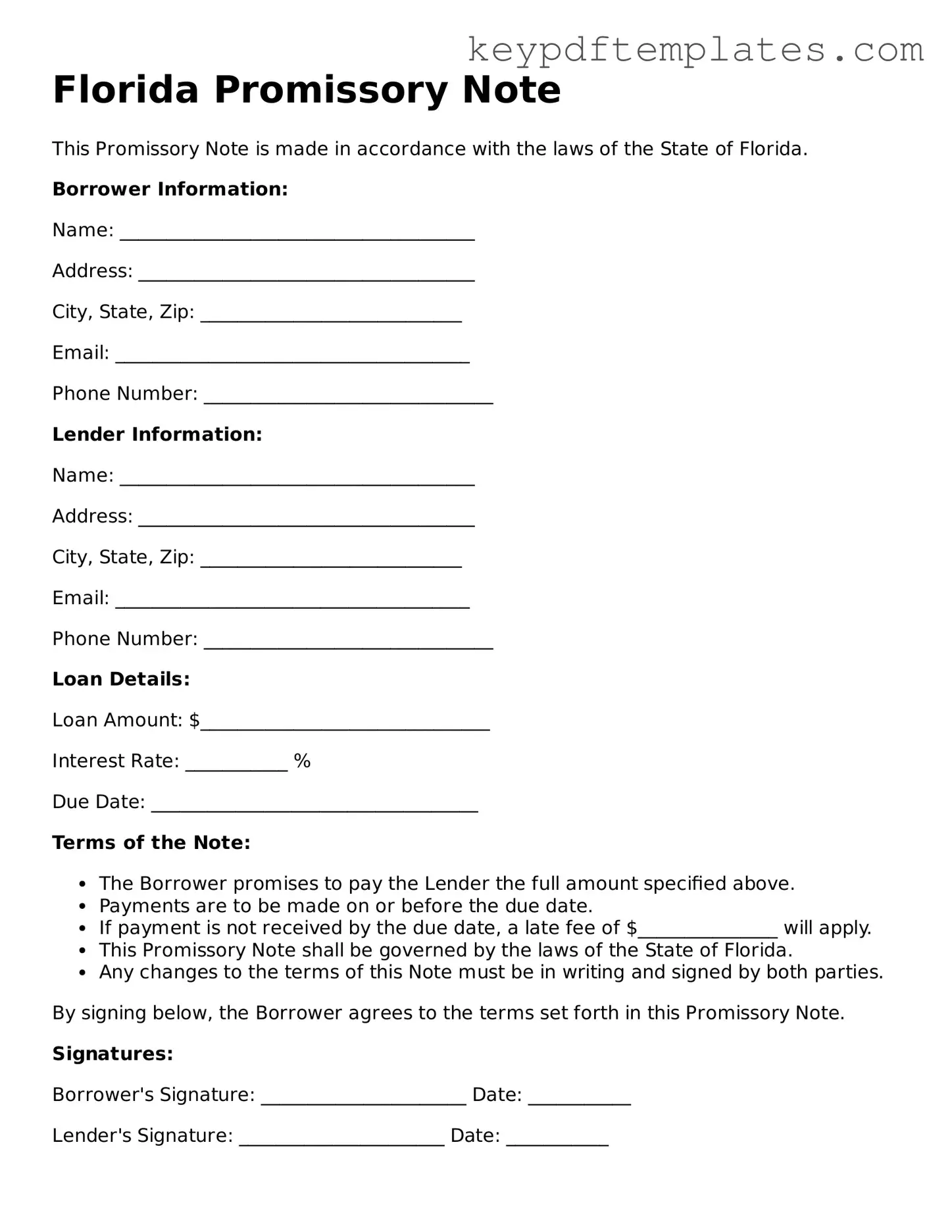Legal Promissory Note Document for the State of Florida
A Florida Promissory Note is a legal document that outlines a borrower's promise to repay a loan to a lender under specified terms. This form serves as a crucial tool in financial transactions, providing clarity and protection for both parties involved. Understanding its components can help individuals navigate the complexities of borrowing and lending in Florida.
Modify Document Online
